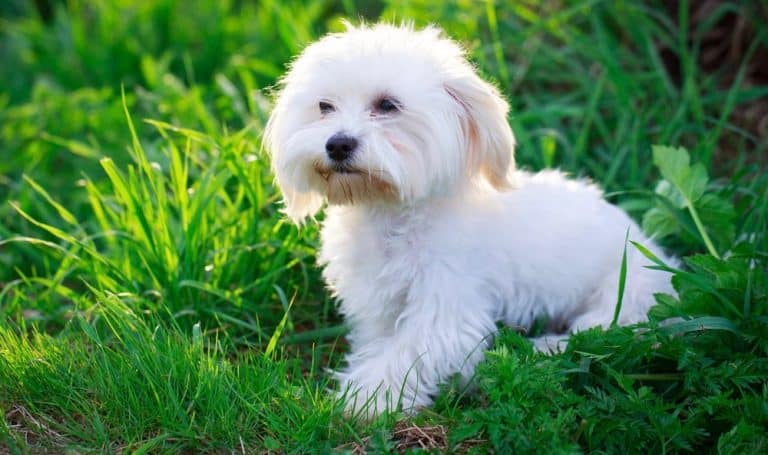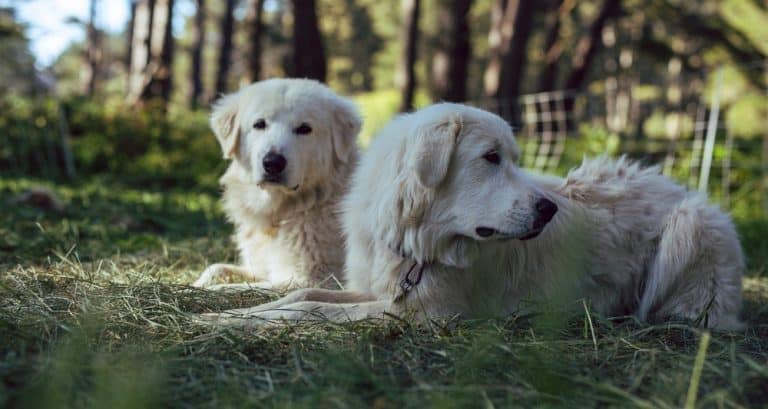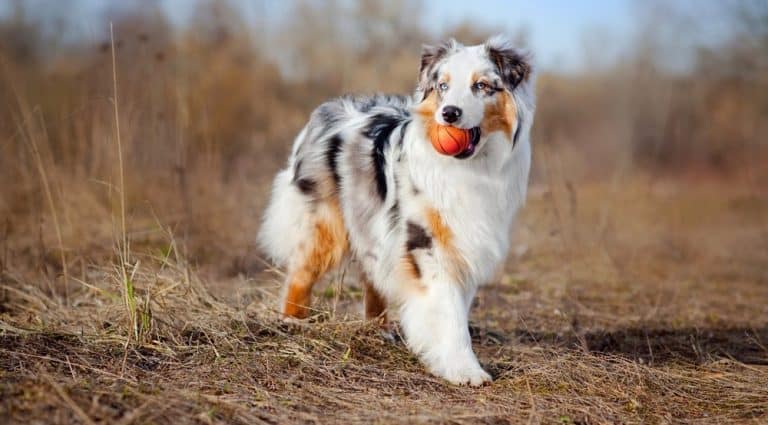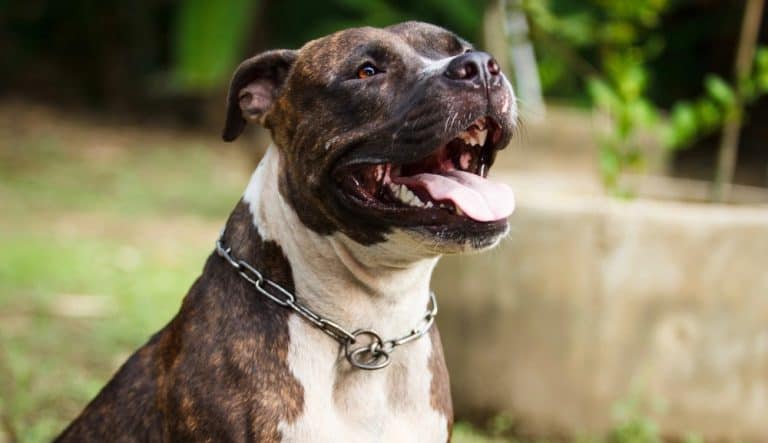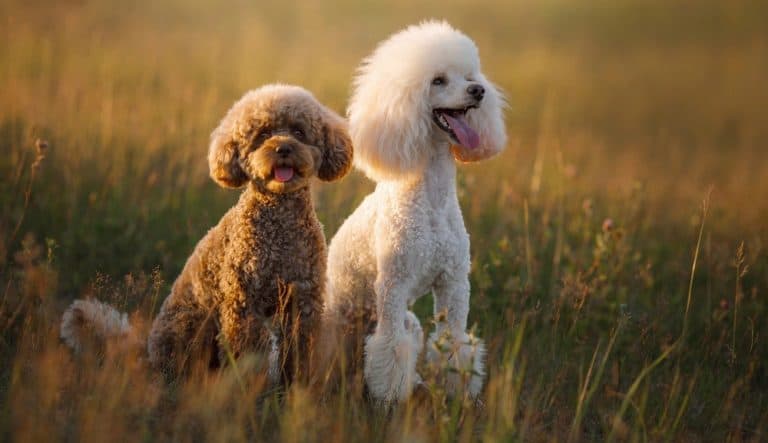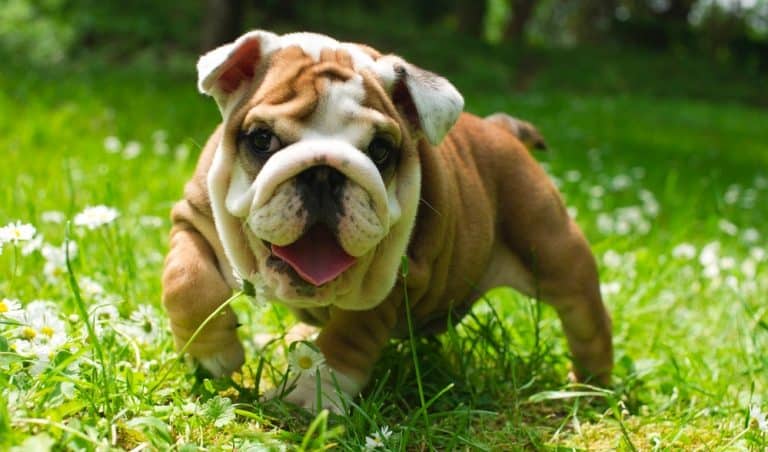Can You Stop A German Shepherd From Shedding?
German shepherds shed all year long. While their shedding is heavier in the spring and fall, cats may and will shed their undercoat throughout the year.
If you don’t want to deal with shedding, a German shepherd might not be the best choice. This breed loses a lot of fur, so anticipate your home to be covered with dog hair throughout shedding season.
It can be intimidating and managing a German shepherd’s coat shedding will require a lot of patience and persistence.
However, if you absolutely want a German shepherd, you may anticipate the amount of shedding and take precautions. While you cannot totally eliminate your dog’s shedding, there are various methods for reducing it.
Why Do German Shepherds Shed?
German shepherds, like other shepherds, have what is called a double coat. This implies they have two hair types in their fur: guard hair and undercoat.
Guard hairs are the hairs seen while looking at a dog. They are straight and thick, with the characteristic brown or black hue. This hair does not shed much and typically remains the same all year.
The undercoat is made up of thick, woolly hair that is near to the skin. When we look at a dog, we rarely notice the undercoat. These hairs can only be seen if you split the fur with your hands. The sort of hair that “sheds” is the undercoat.
This undercoat is lost by German shepherds, especially as the seasons change. In the spring and fall, you should expect to see handfuls of hair strewn about your house. However, your dog may shed outside of seasonal shifts.
It’s nearly difficult to live with a German shepherd and not discover hair on occasion.
Most German shepherd owners are astonished by how much their dog sheds. If you haven’t already seen a German shepherd blowing his coat, spend some time with one before committing to purchase one.
You should also keep in mind that some German shepherd health conditions might cause them to shed excessively. Stress, dehydration, poor nutrition, and other issues are examples of such difficulties.
If your dog appears to shed more than normal, consider giving him a dog vitamin for a healthy coat. If this does not work, a trip to the veterinarian is advised.
Reasons for a Dog to Shed a Lot
Other than the natural cycle of seasonal shedding that all German shepherds and many other dog breeds go through – there are other reasons why your dog may be shedding much more than they should be.
Hormones
Shedding refers to the loss of your dog’s undercoat as well as the constant loss of fur.
That undercoat might be shedding due to a thyroid hormone imbalance, creating skin inflammation and brittle hair, which can start as dandruff but soon develop to severe shedding.
Allergies
Allergies are a common cause of shedding in dogs. Your dog may be allergic to anything, including home cleaning chemicals, shampoo, or bug bites. There is also a potential that the shedding is caused by a dietary allergy.
It may be something as simple as introducing the occasional raw egg into their food, or it could be a specific component in their kibble.
The good news about allergies is that you may take preventative measures to keep them from impacting your dog. To rule out any food allergies, you must first identify the culprit.
Consult your veterinarian about doing a dietary elimination study.
This entails gradually eliminating each dubious component, allowing enough time to evaluate if it makes a difference in your dog’s coat.
If you can correctly identify the offending food, you can ensure that your dog avoids it, making it an exceptionally effective long-term remedy.
Stress
Anxiety may cause a variety of health issues in people, including hair loss. This also applies to dogs. When your dog feels scared in the car or at the vet’s office, you may have observed that they shed a lot. But why is this the case?
When your dog is anxious, the production of epinephrine, often known as adrenaline, causes the hair to fall out. It’s unknown why this happens, but you can bet that if your Fido or Princess is scared, the fur will fly.
Unfortunately, some dogs suffer from chronic stress as a result of behavioral disorders or events that make them scared. This is particularly obvious in a shelter setting, for example.
A change in the household, such as the addition of a pet or a move, can also cause stress.
If the tension is only temporary, such as car rides or the vacuum, there’s generally nothing to worry about. It’s a different story if your dog suffers from persistent stress as a result of a behavioral issue.
You should consult with your veterinarian or a Veterinary Behaviorist. Chronic stress can have a negative impact on your dog’s health in ways other than shedding. A professional opinion is required.
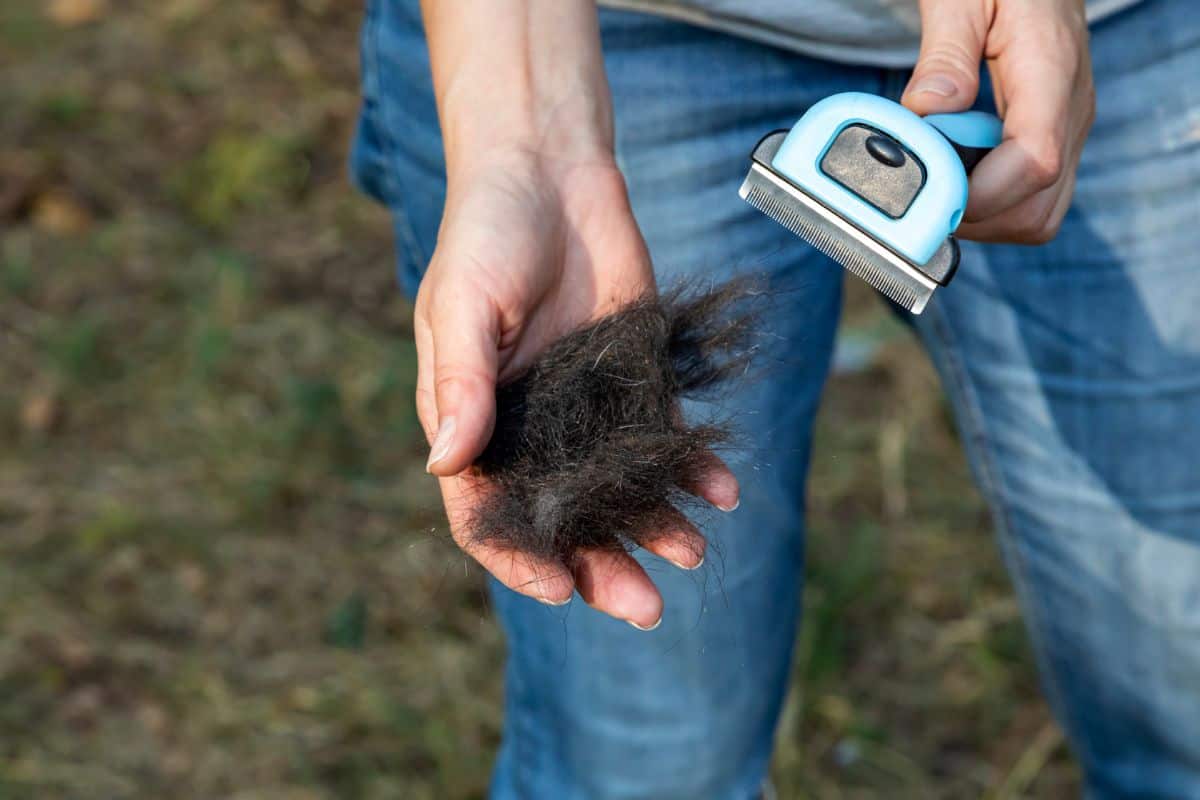
How To Reduce German Shepherd Shedding
Here is a breakdown of some of the ways that you can get much better control on the amount in which your German shepherd (or any dog) sheds.
Grooming
One of the most effective ways to reduce the amount of shedding that your German shepherd is doing is to get on top of their grooming schedule.
Brush Them Regularly
Brushing is essential for double-coated dogs, such as the German shepherd. This is a crucial grooming practice for your dog, especially because it sheds its coat all year.
Brushing your German shepherd at least twice a week during regular days is suggested. Once the shedding season rolls round, remove any loose hair with an undercoat rake.
Brushing is necessary to avoid the development of skin issues and to remove any mats of the coat, commonly known as matting.
Brush your dog’s hair in the direction of growth, not against it, since this will cause skin injury. Do it lightly to avoid damaging the topcoat.
Use the Right Grooming Tools
For your dog, you should only use high-quality tools. It is critical that you do not harm your dog’s coat.
An undercoat rake is necessary for removing loose hair from the undercoat. If it is not removed, it can be painful for your dog and will be more difficult to remove the next time you brush your German shepherd.
Because undercoat rakes have large spaces between the teeth, it will not provide a sharp tugging feeling that will harm your dog.
Resist Cutting Their Coat
If you see your dog’s coat growing longer, you may be tempted to clip or shave it. A German shepherd’s coat should not be cropped or shaved unless a vet advises it.
The coat protects the animal from hazardous elements and, more significantly, regulates its body temperature. If you remove its topcoat, the undercoat will be exposed to the cold of winter and the heat rays of the sun during the summer.
Bathing
German shepherds do not require regular bathing due to their thick coat. Actually, they only need to bathe every 6 to 10 weeks. This is done to maintain their undercoat smelling fresh and clean by removing all dead and loose hair.
Bathing your pet might remove vital oils that protect the dog’s skin, causing it to become dry. Because dry skin is irritating, your pet will scratch more, causing more hair to accumulate in your home.
Baths should be given no more than once every six to eight weeks to give your pet enough opportunity to replace the oils that have been taken away.
Using a high-quality shampoo, such as those on this list, will also help replace the oils and other nutrients that are lost.
Brushing the coat with an undercoat rake after washing and while it is moist can aid in the removal of any dead and loose hair.
Professional groomers also use high-velocity dryers to remove undesirable hair. For 2 to 3 weeks, this grooming tool is quite successful in decreasing shedding.
Instead of traveling to a groomer, you may save money by purchasing your own high-velocity dryer. These dryers reduce the amount of hair in your home while also cutting your wet dog’s drying time in half.
Ingredients to Look For in Dog Shampoo
If you want the best chances at reducing the amount of hair that your German shepherd sheds, then you should look for shampoos that have the following ingredients:
Vitamins
Vitamins can also assist to repair the damage caused by sunshine and dehydration to the hair. Vitamins A, D, and E are the most frequent ones found in shampoo and are also crucial for skin health.
These vitamins will aid in the retention of moisture and the prevention of rashes, dry spots, and itching. These vitamins will also assist to lubricate the hair follicles, which will aid in hair growth.
If none of these vitamins are available in the shampoo, you may ensure they are present in their meals. These vitamins are abundant in foods such as carrots, squash, and sweet potatoes.
B vitamins are also popular shampoo ingredients since they are derived from biotin, which is a key component for coat health.
B vitamins are also found in green vegetables such as peas, peppers, broccoli, and kale as well as in liver and nutritional yeast.
Zinc is another essential vitamin for your pet’s healthy coat.
The zinc will enhance your pet’s immune system and help him or her battle sickness and other health issues, which might present as a rash or itchy skin, causing more hair to come out and end up on the furniture.
It is also in charge of enzyme production and helps to improve the neurological system.
If the shampoo has no zinc in it, you may help your pet receive enough by feeding it meals that have real, pure meat as the first component, such as turkey, chicken, lamb, or cattle.
Omega Fats
Most shampoos include omega-3 and omega-6 fatty acids, which help to thicken the coat and minimize shedding. Stronger hair is less likely to break and end up on your furnishings.
These omega fats also soften the fur, making it more malleable, and condition the skin, eliminating dry spots that can cause extra dander.
Dry skin can also cause excessive scratching, resulting in more hair falling off your pet. Omega fats can also help your pet regain its natural gloss, making it appear healthier and more beautiful.
Oatmeal
Colloidal oatmeal is frequently seen in dog shampoos, and is regular oats that have been broken into a fine powder that may be used in cosmetics and pharmaceuticals.
Oatmeal is a great source of saponin which is a cleanser capable of deeply cleansing hair follicles and pores to unclog them and allow them to operate correctly.
It can be used on all skin types and, similar to aloe vera, it aids in the formation of a protective layer over the skin to prevent moisture loss. It not only helps with shedding but also keeps skin healthy all year.
Aloe Vera
Many manufacturers prefer to include extra elements that we know help strengthen hair or nourish the skin. Aloe vera is a common ingredient in many of the products on our list.
Aloe will hydrate the skin and provide a protective barrier to keep moisture from leaving, lowering the risk of dry skin, which can cause itching and excessive shedding.
Ingredients to Avoid in Dog Shampoo
Here are things that you should avoid when looking for dog shampoos.
Chemicals and Dyes
While the majority of the companies on our list use all-natural components, if you continue to shop, you will definitely come across several bands that use chemical compounds and artificial colours.
Many dogs are allergic to strong chemicals and using them might cause a rash or other health issues. They may also be harmful to the environment if they end up in the water supply.
Several colours, according to experts, can trigger allergic responses and other major health issues in your dog.
Yellow 5, red 40, blue 2, and yellow 6 dyes can induce everything from a skin irritation to behavior issues, and possibly cancer.
It is preferable to avoid these substances, especially because most dogs cannot see these colors and hence there is no purpose to include them in the diet.
Alcohol
Alcohol is a common element in both cat and human shampoo, but it may quickly dry up the skin and hair. Dried-out hair is fragile and readily breaks off.
Dry skin produces more dander, which can trigger allergic responses in persons who are sensitive to it, and itchy skin, which leads to more frequent and severe scratching.
More scratching will cause more hair to fall out and onto the floor and furnishings.
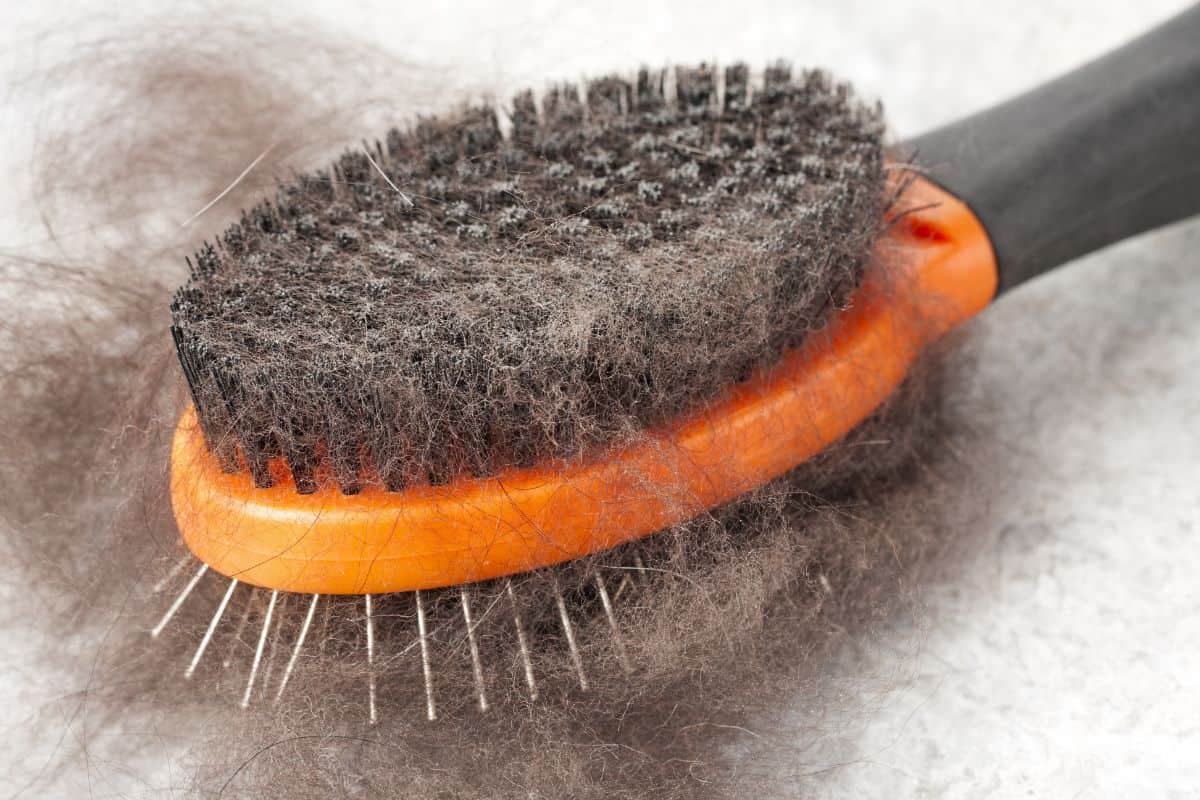
Diet
You may have already given your German shepherd a lot of care while choosing his food, but did you realize that it has a significant impact on how much he sheds?
Here are some supplements and dietary changes that you can make which will make them shed less.
Omega Fatty Acids
Many oils contain a lot of omega fatty acids. Oil is frequently added to dog meals to improve the omega fatty acid content. This, however, is not true for all foods and is not a requirement of the AAFCO.
As a result, many German shepherds may not be getting enough omega fatty acids.
While research on omega fatty acids and shedding have not been conducted, they have been linked to better coat and skin health.
As a result, it stands to reason that boosting your dog’s intake of omega fatty acids will reduce shedding.
There is, however, a catch. These oils will only help to reduce shedding to a limited level. You can’t keep adding oil to make the shedding disappear. That is not how it works and will likely make your dog sick.
If your dog’s diet already includes high quantities of omega fatty acids, adding more is unlikely to make a major difference. However, if their meal does not include any, we recommend supplementing their diet with extras, either by adding oils straight to their food or moving to a different cuisine entirely.
Supplements
Additionally, a variety of supplements available on the market are made expressly to assist dogs that shed excessively. These can include a variety of components, some of which can be more potent than others.
Many of these are merely oils and/or brewer’s yeast that have been repackaged and sold for a greater price. If so, it will probably be less expensive for you to purchase the materials individually.
Brewer’s Yeast
Brewer’s yeast is high in biotin and B vitamins, as well as omega 3 and 6 fatty acids. It’s often regarded as an excellent supplement for maintaining a healthy canine coat, which might include reducing shedding. Brewer’s yeast pills made exclusively for dog usage can be purchased.
Plenty of Hydration
Dehydration can cause dry skin and a flaky coat. We strongly advise keeping fresh water on hand at all times. This is not only beneficial to your dog’s health, but it also reduces shedding.
Even with fresh water, some dogs are notoriously lousy at staying hydrated. Hotter weather may make it harder for dogs to drink enough, and some medical disorders may also have an impact on your dog’s hydration levels.
In these circumstances, you should consider switching to moist dog food. These can include up to 78% moisture, compared to only approximately 10% in ordinary dry dog diets. All of this extra moisture can offer a large portion of the water your dog requires to flourish.
It is also far healthier than other techniques of raising your dog’s water intake, such as flavoring the water.
Eliminate Allergies
Excess shedding can be caused by both allergies and fleas. Food allergies sometimes manifest as excessive itching, particularly around the dog’s paws. A trip to the clinic may be necessary if your dog is very itchy.
All of this itching might lead to hair loss. It wouldn’t really classify as shedding at this point. Your dog would just be losing hair. You may even notice bald spots where your dog likes to itch and scratch.
Fleas and other parasites are itchy as well. Your dog may scratch and itch in an attempt to get rid of the fleas. This itching usually occurs on the dog’s tummy and legs. However, it is technically possible for it to appear anywhere.
While fleas may typically be treated at home or by a groomer, allergies are best managed by a veterinarian.
Best Ways to Clean up Dog Hair
Even after greatly reducing the amount that your German shepherd is shedding, there is still a good chance that your home will have some hair here and there.
Lint Roller
Clean loose pet hair from clothing with a lint roller or a pet hair remover before putting it in the washing machine.
This will get rid of excess pet hair, preventing it from clumping in your washing machine. If you don’t have these goods, you can use damp rubber gloves or a wet sponge. To get rid of pet hair, simply run them along the clothing.
Vacuum
This will remove a large amount of pet hair from the floor and upholstery (make sure you use the upholstery attachment).
There are several specific pet hair vacuums on the market, but whether you have one of those or a basic vacuum cleaner, be sure to empty it on a regular basis, as pet hairs may quickly clog it.
Dryer Sheets
Add one or two dryer sheets and the anti-static qualities of the dryer sheets will resist hair and trap it in the lint trap of your dryer.
Set the dryer on low or no heat for around 10 minutes. No heat is required; simply putting the clothes through a tumble cycle can loosen the materials and pet hair.
Cover Up
If your dog or cat has a favorite location to sit or lay, cover it with a machine-washable blanket.
Use a Humidifier
A humidifier is especially useful in the winter for those of us who live in cold climes, but they also assist with pet hair. They keep your skin moisturized, but they also keep stray fur from adhering to surfaces.
Sticky Tape
Wrap adhesive tape over your palm, sticky side up, then brush it on furniture fabric or clothing – pet hair will immediately adhere to it.
Rubber Gloves
Rubber gloves are not only useful for protecting your hands when cleaning, but they are also effective in removing pet hair. Simply put on the gloves, soak them, and rub them over the cloth to lift the hairs.
What’s great about it is that it works on both short and long cat and dog hair. Once balled up, just wipe the rest of the surface clean.
Summary
German shepherds are loyal, fearless, and readily trained dogs, yet they are also notorious shedders. For some, shedding might be a frightening experience, but if you love dogs, you should already realize that it is a natural part of their lives.
Dealing with your German shepherd’s shedding will be a breeze if you follow appropriate grooming techniques and use the best grooming supplies. You can also add certain elements to their diet such as omega fatty acids and supplements.

